Too much light does not see everything
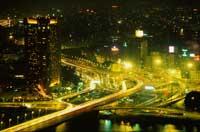
Without light there is no life, but neither with too much light. Light is necessary for plants to carry out photosynthesis and to orient most animal species. But in a 24 hour interval at night it corresponds its part, and the biological clock, for its proper functioning, needs both luminosity and darkness.
Unfortunately, as a measure of security, of ornament or, if not, of increase of sales, in the cities there are all the illuminated corners and it seems that the night has escaped from the cities. The light, like those poured from the factories, is neither dirty nor odorous, nor annoys as much as the noise produced by traffic. For this reason, the obvious pollution caused by technical progress and demographic growth is very minority and most of the population of the cities is attracted by the wide avenues adorned by lights of all colors, and let's not say in these Christmas dates. But this clarity prevents seeing the stars of the clear sky and is the nightmare of astronomers.
The images taken by satellite at night clearly show the strength of artificial light in cities. From the earth you see nothing, neither stars! According to experts, although more than 2,000 stars appeared in the starry nights, the inhabitants of the cities of northern Europe do not see more than twenty stars. If it continues like this, within twenty-five years no star will be seen.
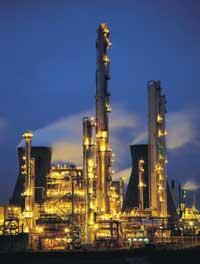
But in addition to being harmful to lovers of looking at the stars, artificial light is also a danger to many animals, like some insects. When the usual row of street streetlights, for example, many insects do not burn, it takes them out of their path. When meeting these impassable walls, the insects are dazzled and lost adrift. The light of a football field attracts butterflies located in a circumference of 150 km, which disturbs the reproductive process. Migratory birds, fascinated by the excess of light, change the biological clock and run the risk of being lost adrift. And what to say about the damage that circular lanterns have to the vegetation of the parks that make photosynthesis 24 hours a day!
Light also affects the human being. It prevents sleep, generates stress, alters the hormonal rhythm of women and changes the psyche of children who need darkness. The entrance of the light of the headlights of the window of the room prevents sleep, although the body can get used to time.
Nightmare light
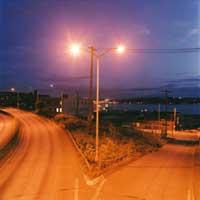
Disproportionate artificial light is mainly concentrated in roads and cities, but in small towns no money is wasted to change the old streetlights, so light pollution is a fairly widespread phenomenon in the industrialized countries.
Road lighting is considered to be a measure to reduce accidents, but if illuminated in excess the opposite effect is achieved. The high-intensity luminaires, if they do not have a protective layer, can cause the glare of the driver. In addition, high luminosity creates a sense of safety and drives driving at higher speed.
In the cities, the main enemies are advertisements, old streetlights that do not lead light to the ground and light bulbs to the sky. The 60% of the light of most circular lanterns, instead of the street, illuminate it to the sky. This generates unnecessary energy expenditure and direct pollution. In addition, more and more historical buildings are illuminated (church, castle, bridge...) during the night. It is beautiful, but normally the projectors stay on all night and the light rays are usually wider than the monument.
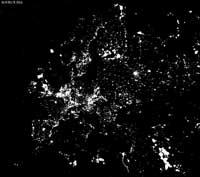
Consequently, the sky is illuminated directly and with great power. In addition, it seems surprising that this idea also applies in spectacular natural spaces. It is not necessary to go far to see an example of city. Just take a walk along the coastal promenade of San Sebastian to see the powerful lights that illuminate directly the sea 10 meters away.
Alternatives alternatives alternatives alternatives Alternatives
Although in the last twenty years astronomers have warned of the disproportionate diffusion of artificial light, timely measures have not been taken. The lighting of roads and houses is often a security measure, but if it became more adequate, the reduction of damage would not be very difficult due to the existence of simple and economic alternatives. The improvement of light intensity, the correct orientation of light emissions, and the simple illumination of the necessary spaces would be enough to save energy and ensure minimal darkness.
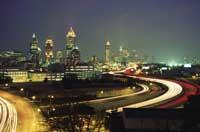
One of the measures to be taken is the change of circular street lamps. Older circular lanterns do not have an aluminum "hat" that fulfills the function of channeling light, so most of the light is dispersed directly into the atmosphere. In case of modifying them, it is calculated that you can illuminate the pedestrian path and save up to 50% energy. On the other hand, it is convenient to discard the mercury vapor bulbs and use the sodium vapor bulbs, since the monochromatic light of the latter runs easily and does not produce a fascinating color light.
Astronomers do not see the illumination of monuments so badly, but they believe it should be measured. At night the illuminated monuments are spectacular, but who is in the middle of the night, as if he had no other task, looking at the monuments? Therefore, astronomers ask that the lights be turned off when the movement of the street ends.
Christmas Lighting

In Euskal Herria there is also a lot of light pollution and the excess of light in the cities is evident. For example, in Bilbao there are 26,000 points of light to ensure the light in the city.
According to official data, street lighting costs 25 million pesetas per month, but with simple and adequate measures this expenditure can be reduced by 30%. The use of other types of street lamps can mean savings of 8 million per month and a more rational use.
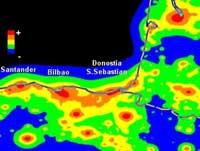
But in addition to the spending that takes place throughout the year, the expense and pollution generated by Christmas lighting is not a problem of jokes. In Vitoria-Gasteiz, 800,000 public lighting bulbs will be installed. It will build 240 arches along 54 streets. In addition to the streets, the City Council will have special lighting.
The installation of these luminaires entails an expenditure of 16 million pesetas for the sellers and the electric expenditure is run by the city council. In Eibar, the city council presented a budget of 8 million to illuminate about twenty streets.
Published in the supplement Natura de Gara.
Buletina
Bidali zure helbide elektronikoa eta jaso asteroko buletina zure sarrera-ontzian











